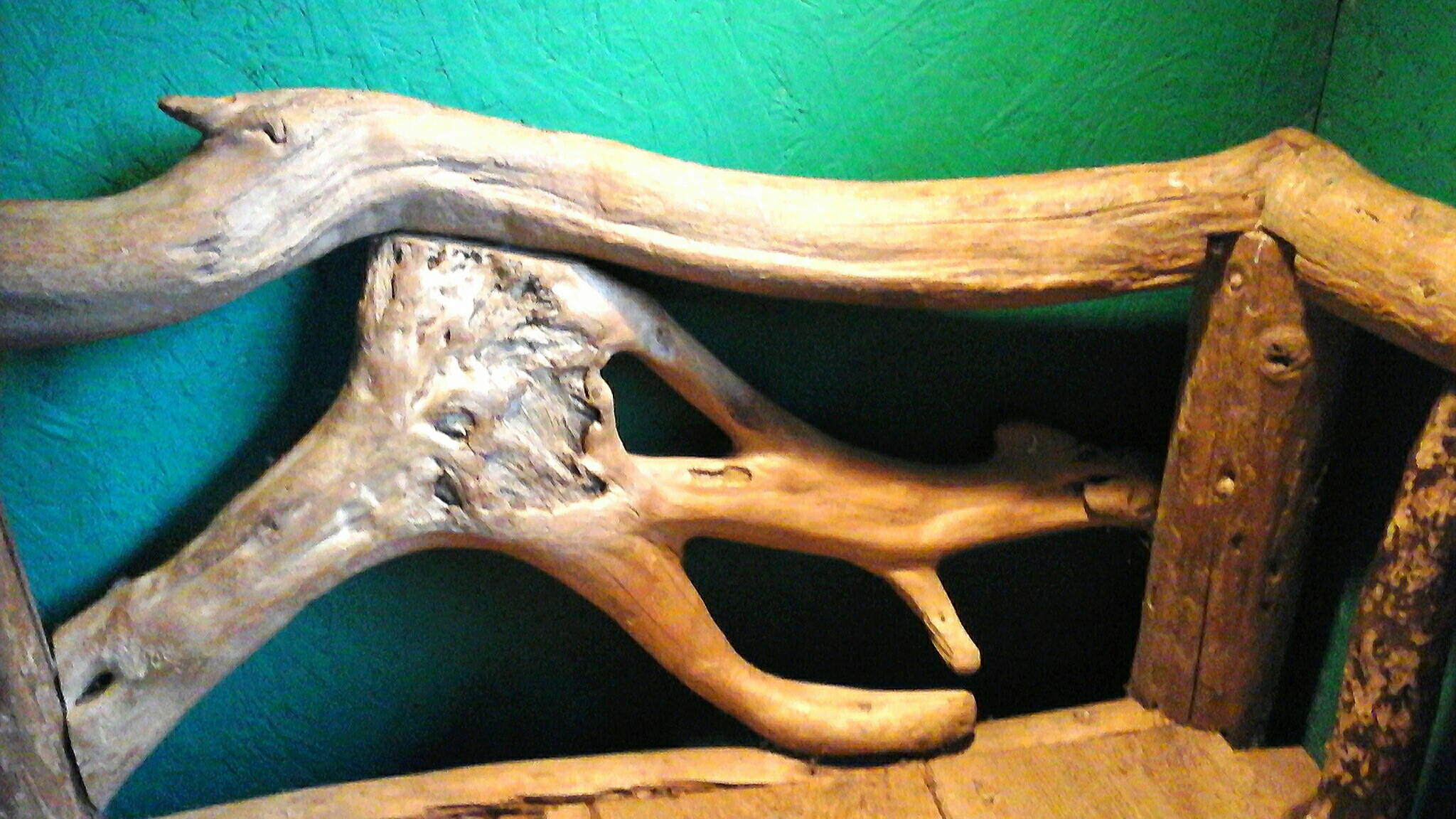I’ve always been fascinated by driftwood. As a child, their sometimes amazing and twisted shapes called to my imagination. I saw them as petrified, shapeshifting creatures from another dimension caught and frozen in mid-contortion as they emerged into our world. One large, weathered piece high up on the beach just below the forest looked like a dragon. As children, we’d weave stories about it and ride it to faraway adventures.
Currents from as far away as Japan have brought us many different kinds of driftwood, like mahogany from the Philippines, Port Orford cedar, iron bark, bamboo, redwood, yew, and more.
I know that some people, likewise fascinated, have used driftwood to inspire their artistic impulses (see www.alaskadriftwoodart.com). My mom likes to find curious shapes, some of them appearing as highly stylized fish or birds, and position them in her window or on her coffee table as earth-and-sea-sculpted pieces of art.
While I admire that, these days my attitude toward driftwood is much more practical. For instance, when I moved into my first floathouse and needed a bed, preferably a daybed to double as a couch since space was at a premium, I didn’t want to have to go to the expense or hassle of getting one out here. I looked to the beaches instead.
My dad and I set out with a shopping list of the driftwood we’d need. Four poles for the legs and three more for the frame to lay the planks on for the mattress platform, all approximately the same sturdy size in diameter. Then we’d need smaller straight poles for the back, pieces for the side arms, and a back piece to tie it all together.
It took us days to find what we needed, and sometimes it felt like a treasure hunt to find just the right piece as we nosed the skiff into one remote bay after another, the outboard exhaust and our breath floating on the chill air as winter approached. Curiously, most of what we needed, we found in the small bay nearest to where we live. Our hunt for the poles for the back I accomplished on foot, hiking along seaweed-strewn beaches. I turned up some interesting species of drift, cherry and apple among them. In a way, I’d be sleeping in an orchard.
My dad was the one who insisted that we use a huge, sweeping piece we found floating in the nearby bay. It curved upward on both ends like a giant, 15-foot long waxed mustache. He said that if he sawed off the ends the back of the bed would rise to a point.
By the time we found intricate and interesting pieces for the sides of the bed, the skiff was piled high with a mess of tangled and weathered wood that had traveled from far away places, destined to become a place for me to sleep. We unloaded everything into my dad’s shop, in the space where he’d built more than one wooden skiff over the years. We let the driftwood dry out before we started measuring and chainsawing or hand sawing them to the right length.
With the generator running and the bare light bulb shining down from the raw rafters during the long winter nights, we arranged and sorted the pieces and started fitting them together. It felt like a huge jigsaw puzzle, one in which you use considerable muscle to heft some of the pieces into place.
My dad was the creative director who made the artistic as well as practical choices, and the end result was impressive: sturdy, but surprisingly gracious in design. We built a storage platform underneath the bed, but my favorite part was the bookcase built into the end of it. As my five-year-old nephew Sterling said in astonishment when he first saw the books in the end of the bed: “This isn’t just a bed. This is a liberry bed!”
My driftwood daybed is a unique piece of furniture, seemingly built for a Henry VIII, a larger than life type of king. It has a throne-like attitude. Sleeping high up on its tree trunk posts with its sweeping back and arms curving up solid and protective around you is a comforting experience.
Besides the bed, my house is filled with other bits of driftwood furniture that my brothers, teenagers at the time, built for me. There’s a charming little bench that complements the daybed with a similarly styled back, a small printer table, an outdoor table — quaintly crooked — on which I kept colorful bottles and jars. Then there are the driftwood shelf brackets, driftwood door handles, driftwood picture frames, and driftwood tops for small occasional tables.
There is no end to what can be done with elegant, intricate, tide-gifted driftwood.
• Tara Neilson blogs at www.alaskaforreal.com.

